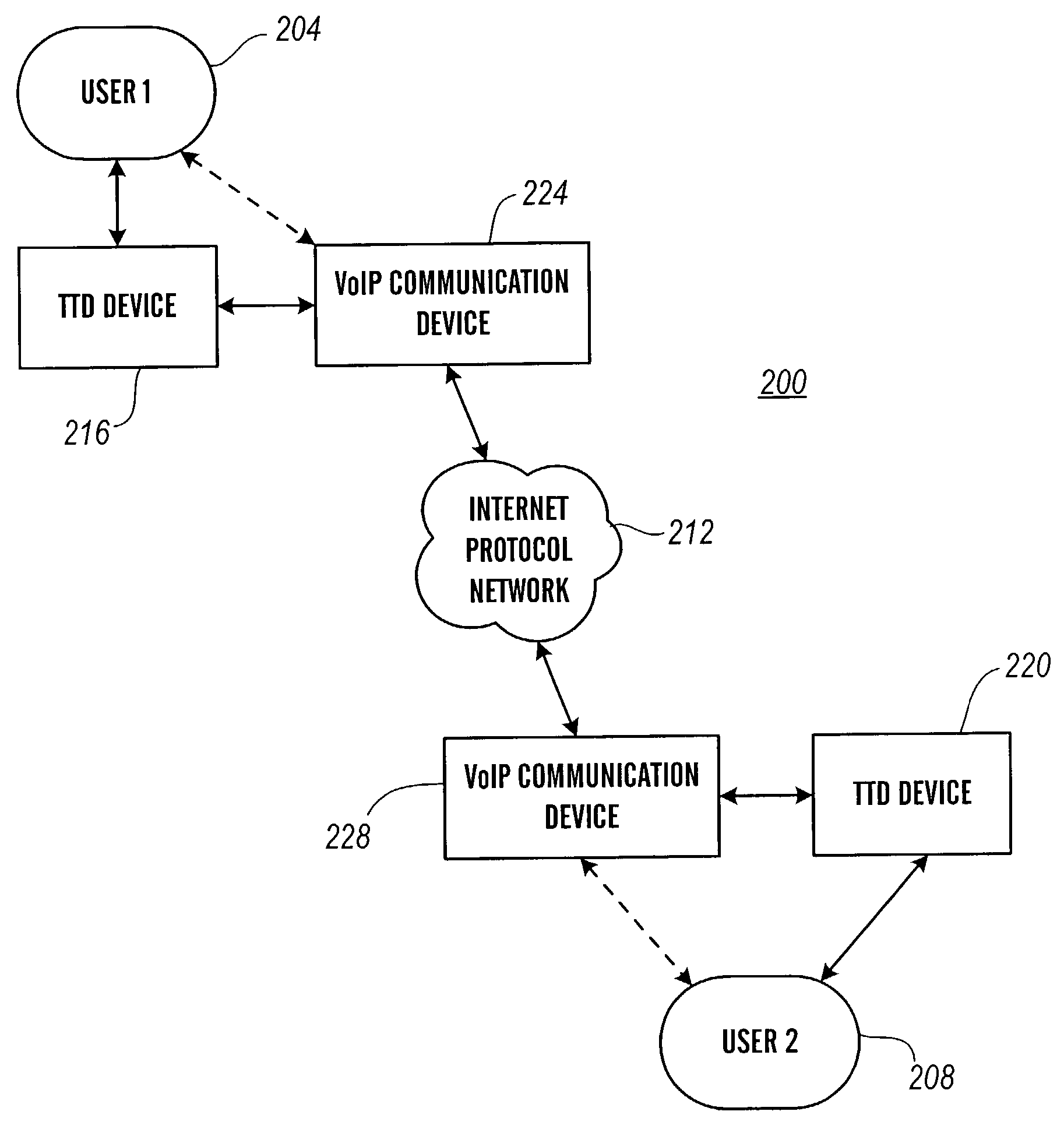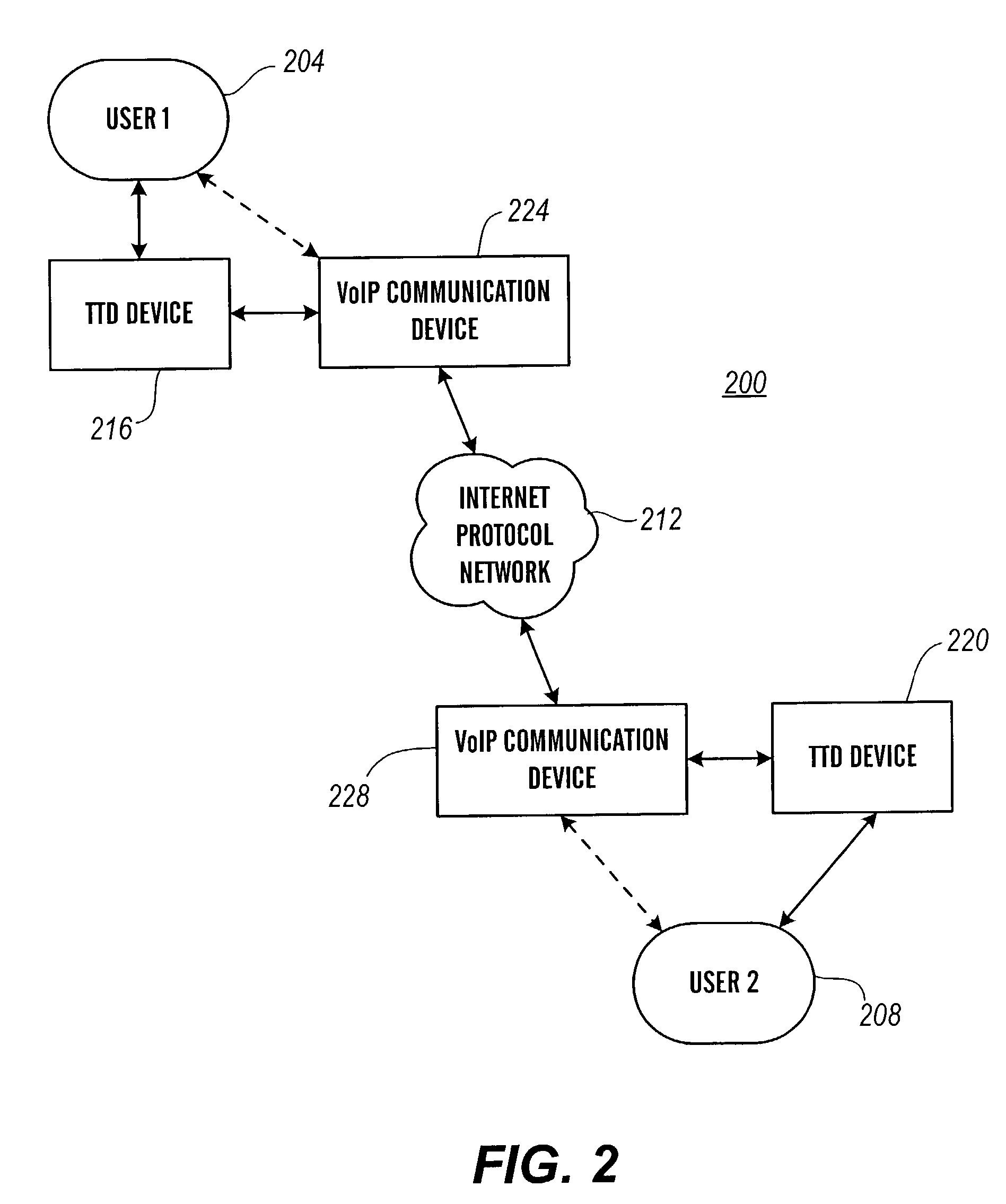Methods for reconstructing missing packets in TTY over voice over IP transmission
- Summary
- Abstract
- Description
- Claims
- Application Information
AI Technical Summary
Benefits of technology
Problems solved by technology
Method used
Image
Examples
Embodiment Construction
[0036]In a typical arrangement such as shown in FIG. 2, a TTD device 216, 220 is coupled to a communication device, including a VoIP communication device 224, 228, by an acoustical or an electronic coupler. In an acoustical coupler arrangement, the TTD device 216 provides a mechanical coupler that receives the speaker portion of a handset associated with the communication device 224, 228 at a receiver portion of the coupler, and receives the microphone portion of the handset associated with the communication device 224, 228 at an output portion of the coupler. Such couplers often include flexible bellows arrangements, to improve the efficiency with which audible signals are transferred between the handset and the TTD device 216, 220. In such arrangements, signals encoding characters are transmitted or received as audible analog data. In an electronic coupler arrangement, the TTD device 216, 220 passes analog or digital electronic representations of the audible tones comprising a tex...
PUM
 Login to View More
Login to View More Abstract
Description
Claims
Application Information
 Login to View More
Login to View More - R&D
- Intellectual Property
- Life Sciences
- Materials
- Tech Scout
- Unparalleled Data Quality
- Higher Quality Content
- 60% Fewer Hallucinations
Browse by: Latest US Patents, China's latest patents, Technical Efficacy Thesaurus, Application Domain, Technology Topic, Popular Technical Reports.
© 2025 PatSnap. All rights reserved.Legal|Privacy policy|Modern Slavery Act Transparency Statement|Sitemap|About US| Contact US: help@patsnap.com



